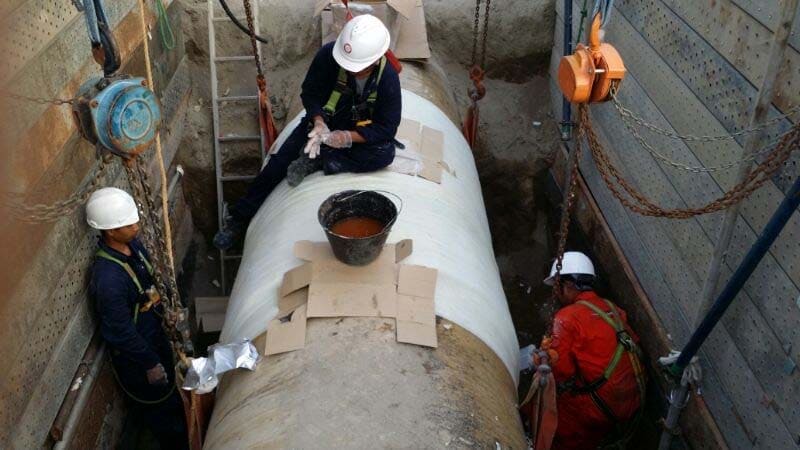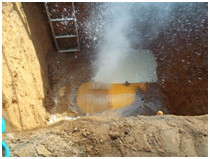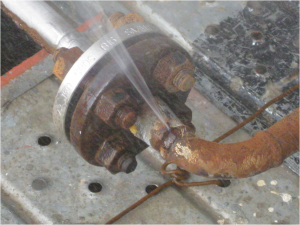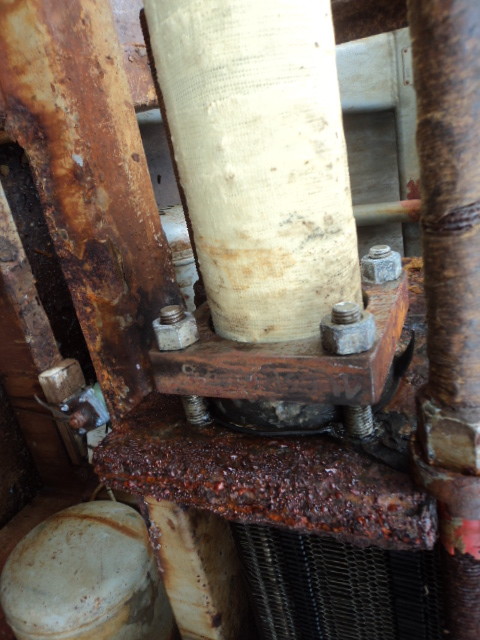
Temporary and Permanent Pipe Leak Repairs

Introduction
Most pipe repair components have a design basis in accordance with internationally recognised codes or standards. However in most cases these codes or standards may not concern piping or pipelines, but concern pressure vessel type codes, such as ASME Section VIII: Pressure Vessel Code, or API 6H: Specification on End Closures, Connectors and Swivels. Pressure vessel codes, unlike piping codes, have a greater degree of flexibility in their application.
The crop-and-replace repair method is permanent due to the welding of the replacement section onto the parent pipe. In this article, we shall look into the other categories of pipe leak repairs.
Temporary ‘Stand-Off’ Repairs
When the repair component utilized is in the form of a ‘stand-off’ type repair clamp or enclosure, the repair is very much regarded as placing a pressure vessel around the damaged area – no welding is involved or ‘substituted’. In these situations one must consider the life-cycle of the repaired pipe system –will internal metal loss of the pipe underneath the clamp continue? Will degradation of the elastomeric seal material occur? These considerations will dictate the need to afford periodic inspection and/or testing to the repair component. It may be possible to periodically test the integrity of seal areas, but this may not provide any information on the integrity of the pipe wall, as certain conditions may approach the limit of the remaining pipe wall to carry the internal pressure imposed axial stresses when the repair clamp does not have the ability to accommodate these stresses.
Permanent Repairs
For all pipe repairs, the operator needs to perform a structured risk assessment that includes the consideration of all of the potential future damage or deterioration mechanisms. The output from this risk assessment will typically be the specification of the necessary inspection and testing activities, and associated periodicities, to ensure continuing ‘fitness-for-purpose’. The repair component itself may well be regarded as being a permanent repair (a repair component that is intended to remain in place for the remaining life of the piping system), but may require periodic examination. This is particularly important when repairs have been afforded to a safety-critical piping system, where there is a need to demonstrate that the system “remains in good repair and condition”.
Repair Philosophy
For safety critical piping systems the repair philosophy should, whenever possible, be:
• replace like-for-like;
• temporary repair until replacement can be carried out;
• permanent repair only where replacement is not practical.
For non-metallic composite repairs under ASME PCC2 and ISO 24817 standards, most of the pipe repair solutions provided are considered semi-permanent, lasting up to 20 years.










